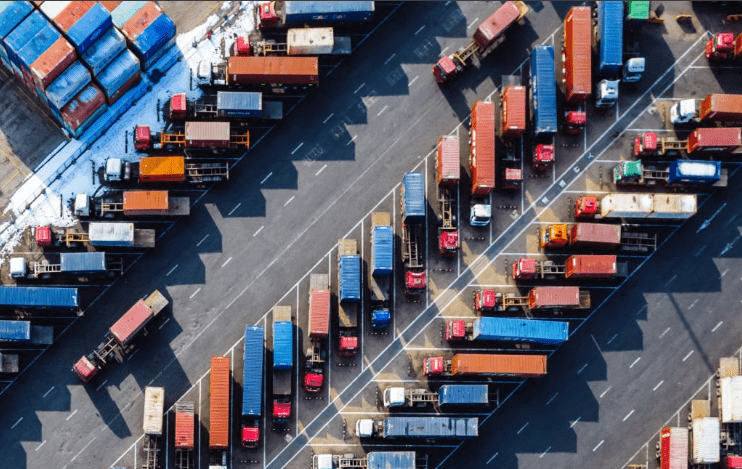The report “Assessment of the Impact of the New 2025 Traffic Law After One Month of Implementation on the Logistics and Supply Chain Industry”, recently published by CEL, a leading supply chain and logistics consulting firm, reveals that only 37% of businesses were prepared for the new regulations, while 63% had not updated or made prior preparations…

The report was conducted with the participation of 460 experts from various fields, with the logistics and supply chain sector making up 60.9%, alongside industries such as fast-moving consumer goods, food & beverages, retail, and manufacturing.
The report focuses on analyzing the impact of the new traffic law, effective from January 1, 2025, including regulations on traffic safety, emission standards, and driving hour limits for transportation and logistics companies in Vietnam.
Costs have increased, and delivery performance has significantly declined.
Among the surveyed businesses, 44.7% were unaware of the new law before its implementation. Of those who were aware, only 38.3% took proactive steps to prepare, while 17% acknowledged knowing the law but had not prepared. This indicates that effective outreach and education are crucial to ensure that all businesses fully understand and comply with the new traffic regulations.
Furthermore, the complexity of the law, high costs, and lack of urgency are significant barriers to full compliance. Businesses are expected to face increased operational costs of 10-20%, mainly due to the need for more drivers to comply with the new regulations, along with logistics adjustments to accommodate the new driving hour limits.
When evaluating the impact by industry, the report highlights that the logistics and distribution sector, which is significantly affected by road regulations, shows higher levels of awareness and preparedness. 64.3% of businesses in this sector are aware of the new law, with 42.9% having prepared in advance.
Around 80% of businesses report major to severe disruptions due to Vietnam’s new traffic law. Notably, the logistics sector faces the greatest challenges, with 80% encountering significant difficulties.
Long-distance transport is particularly impacted, leading to longer delivery times and a shortage of drivers. This disrupts the supply of raw materials and international trade, causing delays in import and export activities.
Similarly, around 70% of businesses are facing significant impacts on operational costs due to the reduction in driving hours. This lowers employee income and increases business costs. The increase in fines further raises costs, forcing transport companies and external suppliers to hike prices.
After the law took effect, 52.5% of businesses have seen costs increase by up to 10%, with 67.5% facing delivery times extended by more than 10%. Delivery performance has dropped significantly, with only 44.7% maintaining on-time delivery rates between 70-89%.
Around 80% of businesses reported disruptions ranging from major to severe, particularly in the long-distance transport sector. 70% of businesses report that operational costs have been severely affected by reduced driving hours and higher fines. These changes have placed significant pressure on logistics companies and businesses with widespread supply chains.
Additionally, there are delays in adapting to the new traffic regulations: 37.5% of businesses are still planning adjustments or have yet to adapt to the new law, potentially exacerbating the negative impacts.
30% of businesses said they need to expand their fleet or set up driver exchange stations, increasing operational costs. Meanwhile, 10% are adjusting delivery schedules or pre-booking transport to maintain timeliness, with 12.5% increasing transportation costs, risking customer satisfaction and contract retention.
Only 10% of companies are reorganizing delivery routes to comply with regulations, while 15% are focusing on training employees for regulatory compliance without making major operational changes.
New solutions are needed
Survey feedback highly appreciates the long-term benefits and opportunities arising from the new traffic regulations. Specifically, the stricter enforcement of driving hours and penalties is expected to significantly reduce traffic accidents, promote safer movement, and lower related costs for businesses and healthcare systems.
The new emission standards are anticipated to decrease pollution levels, contributing to improved public health and aligning with global sustainable development goals.
The need for compliance with these strict regulations will drive the adoption of advanced logistics technologies, such as automated route planning systems and real-time tracking, enhancing delivery efficiency.
However, to address the immediate challenges, the report emphasizes the need for effective outreach and education to ensure that all businesses fully understand and comply with the new traffic regulations.
One important solution is the application of route optimization technology to shorten travel times and mitigate the impact of the driving hour limits. Upgrading fleets to meet emission standards will not only help businesses comply with the law but also reduce fuel costs and avoid violation penalties.
Additionally, businesses should actively collaborate with regulatory authorities and participate in industry associations to propose adjustments to the regulations based on operational realities, ensuring a smooth and sustainable transition.
Pilot programs should be implemented to help businesses gradually adapt to the new requirements. These pilot programs will serve as real-world examples, giving organizations time to adjust their strategies without immediate full-scale implementation.
During the pilot phase, it is essential to measure potential economic impacts, including fluctuations in transportation costs, driver salary adjustments, and potential delivery delays. This proactive approach will help identify challenges and areas that need attention before broader implementation.
Source: https://vneconomy.vn/luat-giao-thong-moi-2025-tac-dong-manh-toi-nganh-logistics-va-chuoi-cung-ung.htm
